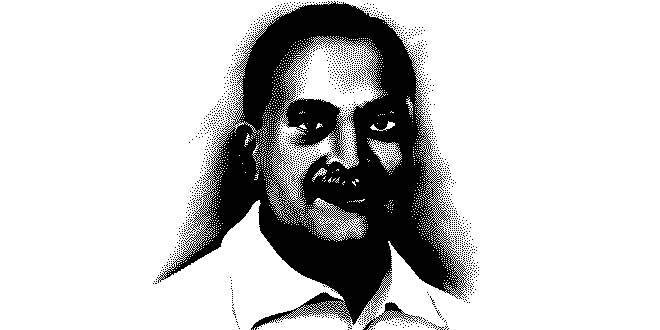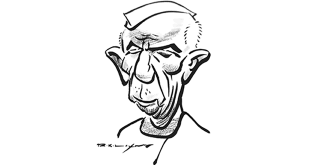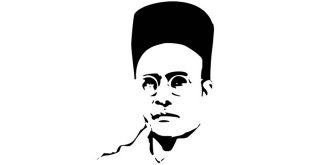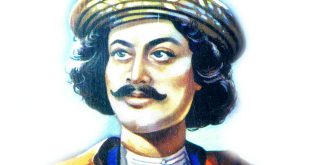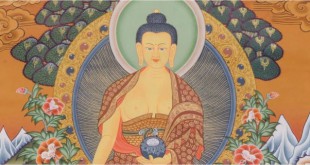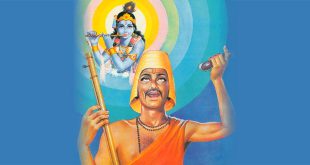| Name: | Bidhan Chandra Roy |
| Born: | 1 July 1882, Bankipore, Patna, India |
| Died: | 1 July 1962, Kolkata |
| Party: | Indian National Congress |
| Awards: | Bharat Ratna |
| Profession: | Physician, Politician, Educationist – Chief Minister of West Bengal (1962–1962) |
Dr. Bidhan Chandra Roy, one of the very few people who are talented enough to acquire both the M.R.C.P. and F.R.C.S. degrees, was an eminent physician, one of the most important freedom fighters for India and also the second Chief Minister of West Bengal. Bidhan Chandra Roy led a very eventful life during which he excelled in each profession he had taken up. In addition, he also laid the foundation stone of cities Bidhannagar and Kalyani in West Bengal. After his flourishing terms as a part of the alumni of the Calcutta Medical College and as the Vice Chancellor of Calcutta University, he entered into active politics and subsequently was elected the Chief Minister of West Bengal, a post that he held till his death. Dr. Bidhan Chandra Roy is fondly remembered through the celebration of the National Doctors Day on July 1 (his birth and death day) every year.
Childhood and Education
Bidhan Chandra Roy was born on July 1, 1882 in the Bankipore region of Patna, Bihar. He was the youngest of the five children of his parents. Bidhan Chandra Roy’s mother died when he was 14 years of age and it was his father who took over the reins of the family. Since his father had to remain outdoors for his work as an excise inspector, the five siblings had to share responsibility of all household work. From a very young age, Bidhan Chandra Roy realized the importance of learning domestic work and lending a helping hand even to people who he was not directly related to, lessons which his father instilled in his heart. He completed his I.A. from Presidency College, Calcutta and his B.A. from Patna College, Bihar.
After completing his graduation in Mathematics, Bidhan Chandra Roy applied for admission in both Bengal Engineering College and Calcutta Medical College. Being academically competent, he successfully qualified both but chose to pursue medical studies. Bidhan Chandra Roy left Patna in June 1901 to start his medical studies at the Calcutta Medical College. Life at the Calcutta Medical College was very difficult for the future physician. Not only was there the pressure of studies, he also had to earn enough money to support himself in the city as his father was no longer in service. Bidhan Chandra Roy earned scholarships to bear the cost of his studies and books, while completely ignoring personal health. It was during his study years at the Calcutta Medical College that the Partition of Bengal was announced. Though the freedom fighter in Bidhan Chandra Roy wanted to be a part of the state’s struggle, he convinced himself that studies were more important than any other activity at that point of time in life.
Dr. Bidhan Chandra Roy: Career
Dr. Bidhan Chandra Roy joined the Provincial Health Service after his studies at Calcutta Medical College were over. While he was appointed as a doctor, B. C. Roy also lent a helping hand as a nurse whenever he had the time. Additionally, he even established a private practice to earn extra money. In February 1909, Bidhan left for England to continue further medical studies at St Bartholomew’s Hospital in London. But the Dean at the hospital did not want to accept the application of an Asian. Unwilling to return defeated, Bidhan Chandra Roy submitted the same application thirty times, before the authorities at St Bartholomew’s Hospital finally relented and allowed him to take admission. By the year 1911, Bidhan Chandra Roy had completed both his M.R.C.P. and F.R.C.S. degrees in a span of only two years and three months, a rare achievement. He returned to India in the year 1911 to join as faculty of Calcutta Medical College, subsequently shifting to the Campbell Medical School and then the Carmichael Medical College.
Right from his childhood days, Bidhan had learnt about social service from his father. Therefore as a doctor too, he worked for the common man by donating large sums of money towards the establishment of medical colleges which would provide both medical education and medical aid to people. Several medical institutions in Calcutta, like the Jadavpur T.B. Hospital, the R.G. Kar Medical College, the Chittaranjan Seva Sadan, the Chittaranjan Cancer Hospital, the Victoria Institution and the Kamala Nehru Hospital were set up by Bidhan Chandra Roy. Bidhan Chandra Roy entered politics in the year 1925. He contested elections from Barrackpore constituency of the Bengal legislative council and won against popular opponent Surendranath Banerjee. The same year Bidhan tabled a resolution to study the causes, effects and prevention of pollution in the Hooghly district.
In the year 1928, Bidhan Chandra Roy was elected to the All India Congress Committee. He became the leader of the Civil Disobedience Movement in Bengal in the year 1929 when he coaxed Pandit Motilal Nehru to nominate him a member of the CWC. In the year 1930, when the Civil Disobedience Movement was still on, Bidhan Chandra Roy and many other members of the CWC were arrested when the CWC was declared an unlawful body. The August 26 arrest landed Dr B C Roy in Alipore Jail. Bidhan Chandra Roy’s involvement with the CWC brought improvements in education, introduced free medical services and led to the establishment of grant in aid hospitals, charitable dispensaries, good roads and better water and electricity supply.
After being elected to the All India Congress Committee, Dr. Bidhan became a good friend of Mahatma Gandhi‘s. When Gandhi had taken ill during the Quit India Movement of 1942, it was Dr B C Roy who treated him after convincing Gandhi to consume medicines, even though they were not made in India. In the year 1942, Bidhan Chandra Roy was elected as the Vice Chancellor of the University of Calcutta. It was during his term that the Japanese bombings in Rangoon took place, leading to a revolution in Calcutta too. Bidhan Chandra Roy was of the belief that education should not suffer as the more educated the youth, the better they can serve their country. Keeping this principle in mind, B C Roy made special air-raid shelters for students and teachers for classes to be held even at a time of war. He also conducted relief activities for the suffering. It was in recognition of his services that he received the Doctorate of Science degree in 1944.
Chief Minister:
Dr. Bidhan’s name was proposed by the Congress for the post of the Chief Minister of West Bengal. However, Bidhan Chandra Roy himself never wanted to assume office as the Bengal CM as he wanted to remain dedicated to his profession as a physician, a position he thought would be jeopardized if he assumes such an important office in politics. It was on the insistence of Mahatma Gandhi that Bidhan Chandra Roy agreed to become the Chief Minister of West Bengal and was elected to the position on January 23, 1948. His 14 years as the second West Bengal CM was immensely successful. Bidhan Chandra Roy was instrumental in seeing the end to violence and food and job shortages in the state following the creation of East Pakistan. The Congress also benefited by Bidhan Chandra Roy’s association with the party. He was a much loved man among the common people of Bengal and the country as a whole. Though he entered into active politics, Bidhan Chandra Roy never forgot the value of education in one’s life. According to him, only education could pave the way to a good and resourceful human being. He made this sentiment clear at a convocation address that he made on December 15, 1956 at the University of Lucknow.
Death:
Dr Bidhan Chandra Roy died on July 1, 1962 a little while after he had completed his daily activities of treating patients who visited him during early hours of the morning and also going over political matters of West Bengal.
Dr. Bidhan Chandra Roy: Honors
In recognition of his immense services to the society, he was awarded the highest civilian award, the Bharat Ratna by the government of India on February 4, 1961. Dr. B. C. Roy’s residence was converted into a nursing home named after his mother Aghorkamini Devi. The government of India set up the Dr B C Roy Memorial Library and Reading Room for Children in the Children’s Book Trust in New Delhi in the year 1967. The B C Roy National Award was also started in the year 1976 to celebrate the contributions of individuals in the fields of medicine, politics, science, philosophy, arts and literature.
Timeline
- 1882: Bidhan Chandra Roy was born on July 1.
- 1896: His mother died.
- 1901: Left Patna to study at the Calcutta Medical College.
- 1909: Went to England to study at the St Bartholomew’s Hospital.
- 1911: Completed his M.R.C.P. and F.R.C.S. and returned to India.
- 1925: Entered into active politics.
- 1925: Tabled resolution on Hooghly pollution study.
- 1928: Elected to All India Congress Committee.
- 1929: Provided leadership in Bengal’s involvement in Civil Disobedience Movement.
- 1930: Nominated to CWC.
- 1930: Arrested and sent to Alipore Jail on August 30.
- 1942: Treated Mahatma Gandhi during Quit India Movement.
- 1942: Served the society following Japanese bombing in Rangoon as University of Calcutta Vice Chancellor.
- 1944: Earned the Doctorate of Science degree.
- 1948: Assumed office as Bengal Chief Minister on January 23.
- 1956: Delivered lecture at University of Lucknow.
- 1961: Was awarded the Bharat Ratna on February 4.
- 1962: Breathed his last on July 1.
- 1967: Dr. B C Roy Memorial Library and Reading Room opened in New Delhi.
- 1976: Dr. B C Roy National Award instituted.
 Kids Portal For Parents India Kids Network
Kids Portal For Parents India Kids Network
